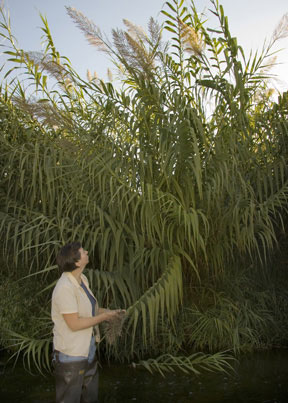Invasive Species
Invasive Species Lunchtime Talks
Each year, UCANR participates in California's Invasive Species Action Week by hosting a series of lunch hour webinars featuring the latest from experts in the field. Join us!

Invasive species can be plants, animals, fungi or microbes. Only a small subset of the exotic species that humans transport from one area to another is invasive. Often, harmful invasions are caused by species from a similar climate that travel well, grow and reproduce vigorously, and spread aggressively under local conditions. These organisms may cause harm by out-competing, preying on or physically disrupting habitat for native species. While the variety of invasive species makes this difficult to quantify, it is thought that the U.S. spends approximately $120 billion annually to control and calculate the impacts of invasive species.
Invasive Plants
Invasive plants degrade habitat and water quality in Southern California. They can also increase the risk of floods and wildfires. Learn more about invasive plants and fire. Read the UC IPM program's pest note about invasive plants in California.
To contact or join the Los Angeles County Weed Management Area, please click here: http://www.lacountywma.org/
Invasive Pests
Invasive pest and disease species pose a risk to native trees and plants. Read more about invasive pests at our urban forestry page.
Aquatic Invasive Species
UC Cooperative Extension is involved in several programs to understand the ecology of, investigate control methods for and provide training to manage and prevent several aquatic invasive species, such as quagga mussels and New Zealand mudsnails. Learn more about our work on aquatic invasive species.
